Business Report: Expansion of Marriott International in Netherlands
VerifiedAdded on 2023/01/09
|17
|3692
|49
Report
AI Summary
This report provides a comprehensive analysis of Marriott International Inc.'s potential expansion into the Netherlands. It begins with an introduction to the hospitality industry and Marriott's background, including its history, market position, and financial performance. The report then examines the business environment of the Netherlands, including political, economic, social, technological, environmental, and legal (PESTLE) factors, along with an analysis of Porter's Five Forces to assess the competitive landscape. The analysis covers market structure, competitors, and financial performance of Marriott. The report also identifies opportunities and threats for Marriott in the Dutch market, considering the country's economic stability, high living standards, and technological advancements. The conclusion summarizes the key findings and provides recommendations for Marriott's expansion strategy in the Netherlands, focusing on leveraging opportunities and mitigating potential risks. This report is a valuable resource for understanding the challenges and prospects of international business expansion, particularly within the hospitality sector.
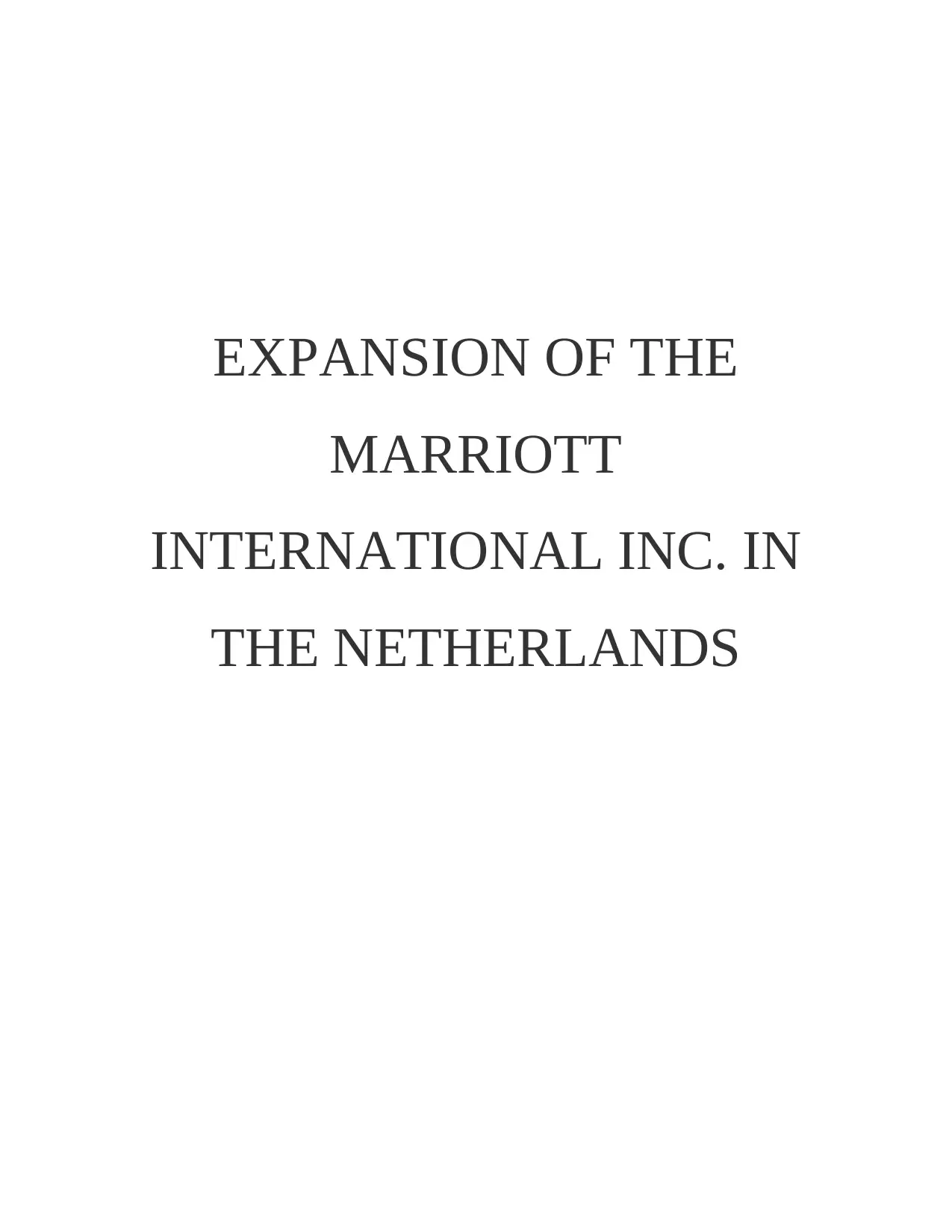
EXPANSION OF THE
MARRIOTT
INTERNATIONAL INC. IN
THE NETHERLANDS
MARRIOTT
INTERNATIONAL INC. IN
THE NETHERLANDS
Paraphrase This Document
Need a fresh take? Get an instant paraphrase of this document with our AI Paraphraser
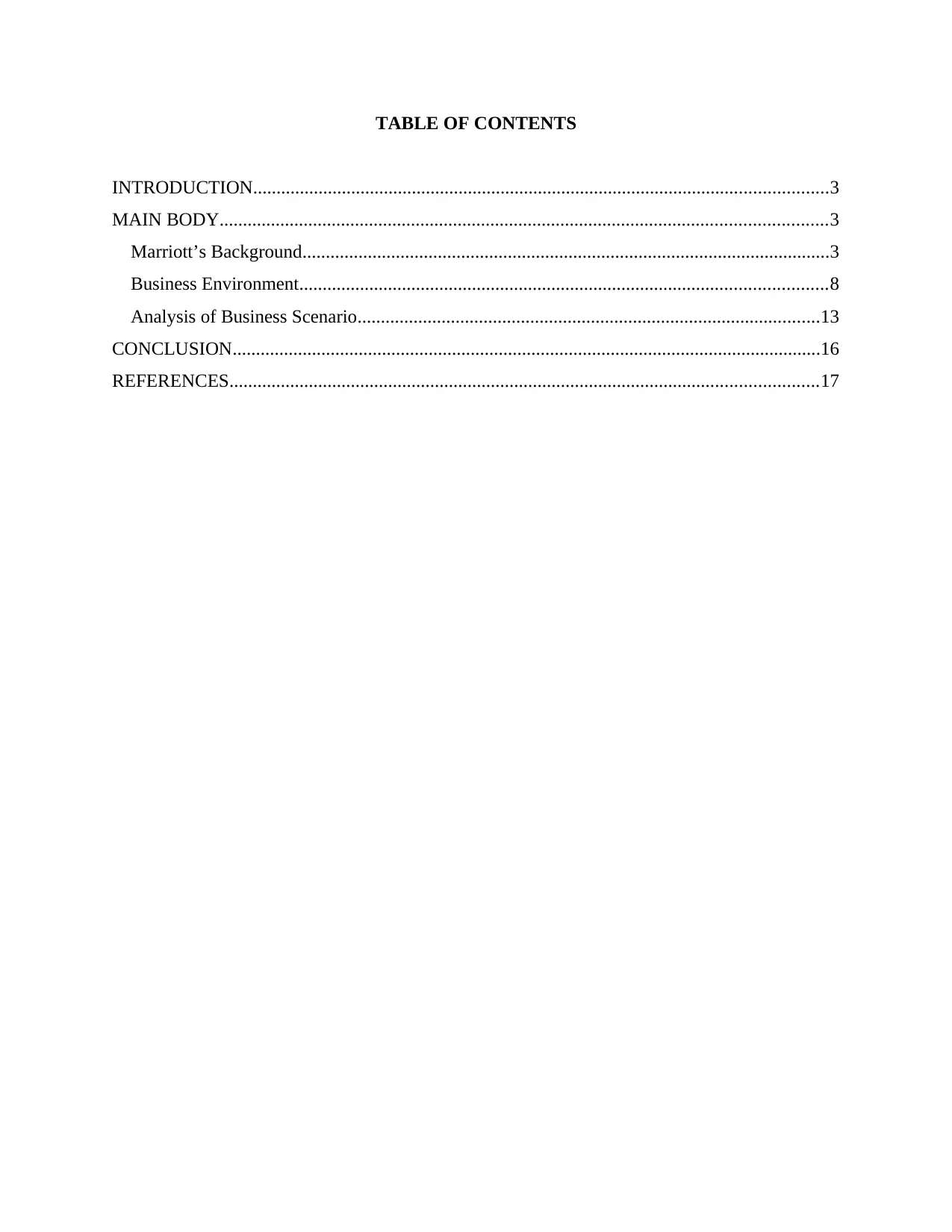
TABLE OF CONTENTS
INTRODUCTION...........................................................................................................................3
MAIN BODY..................................................................................................................................3
Marriott’s Background.................................................................................................................3
Business Environment.................................................................................................................8
Analysis of Business Scenario...................................................................................................13
CONCLUSION..............................................................................................................................16
REFERENCES..............................................................................................................................17
INTRODUCTION...........................................................................................................................3
MAIN BODY..................................................................................................................................3
Marriott’s Background.................................................................................................................3
Business Environment.................................................................................................................8
Analysis of Business Scenario...................................................................................................13
CONCLUSION..............................................................................................................................16
REFERENCES..............................................................................................................................17
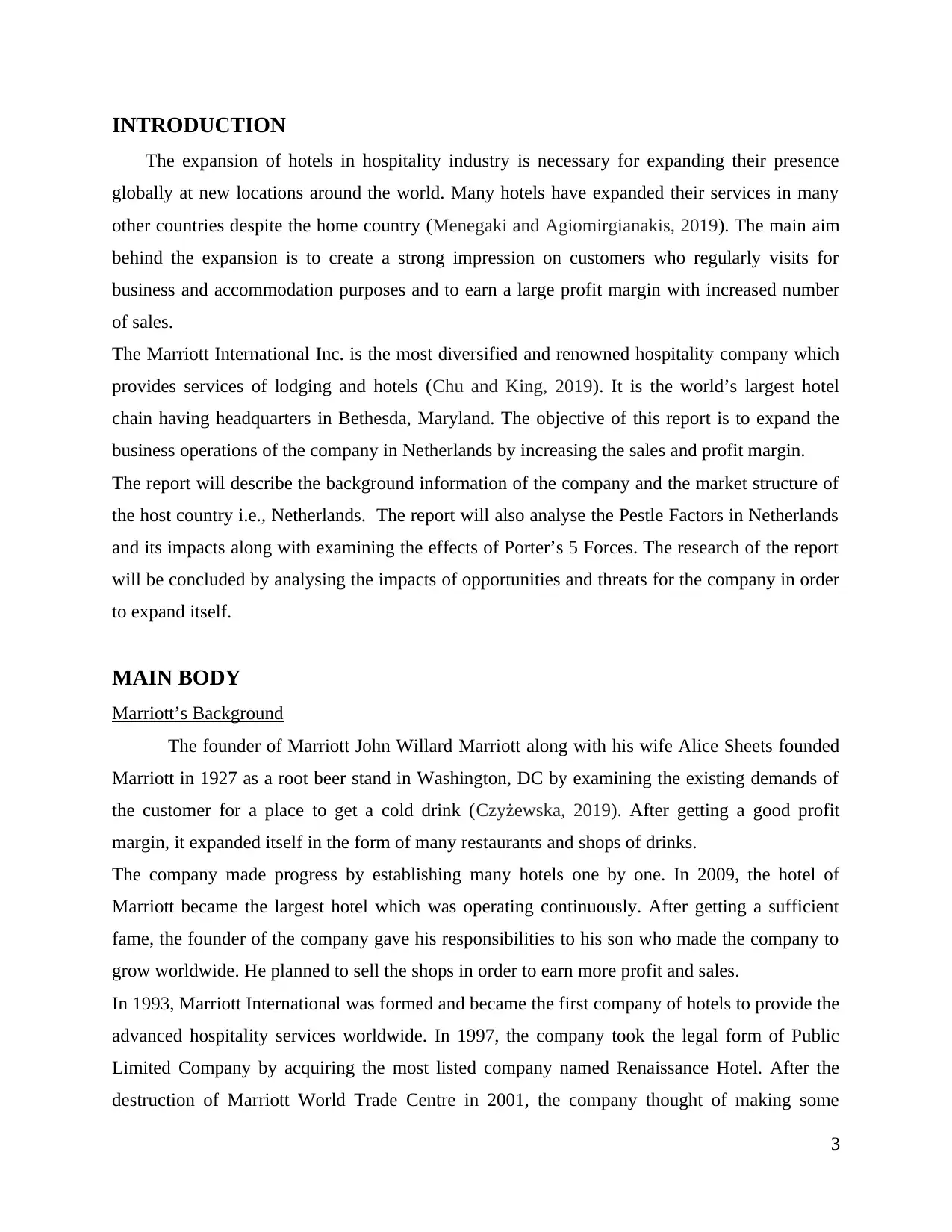
INTRODUCTION
The expansion of hotels in hospitality industry is necessary for expanding their presence
globally at new locations around the world. Many hotels have expanded their services in many
other countries despite the home country (Menegaki and Agiomirgianakis, 2019). The main aim
behind the expansion is to create a strong impression on customers who regularly visits for
business and accommodation purposes and to earn a large profit margin with increased number
of sales.
The Marriott International Inc. is the most diversified and renowned hospitality company which
provides services of lodging and hotels (Chu and King, 2019). It is the world’s largest hotel
chain having headquarters in Bethesda, Maryland. The objective of this report is to expand the
business operations of the company in Netherlands by increasing the sales and profit margin.
The report will describe the background information of the company and the market structure of
the host country i.e., Netherlands. The report will also analyse the Pestle Factors in Netherlands
and its impacts along with examining the effects of Porter’s 5 Forces. The research of the report
will be concluded by analysing the impacts of opportunities and threats for the company in order
to expand itself.
MAIN BODY
Marriott’s Background
The founder of Marriott John Willard Marriott along with his wife Alice Sheets founded
Marriott in 1927 as a root beer stand in Washington, DC by examining the existing demands of
the customer for a place to get a cold drink (Czyżewska, 2019). After getting a good profit
margin, it expanded itself in the form of many restaurants and shops of drinks.
The company made progress by establishing many hotels one by one. In 2009, the hotel of
Marriott became the largest hotel which was operating continuously. After getting a sufficient
fame, the founder of the company gave his responsibilities to his son who made the company to
grow worldwide. He planned to sell the shops in order to earn more profit and sales.
In 1993, Marriott International was formed and became the first company of hotels to provide the
advanced hospitality services worldwide. In 1997, the company took the legal form of Public
Limited Company by acquiring the most listed company named Renaissance Hotel. After the
destruction of Marriott World Trade Centre in 2001, the company thought of making some
3
The expansion of hotels in hospitality industry is necessary for expanding their presence
globally at new locations around the world. Many hotels have expanded their services in many
other countries despite the home country (Menegaki and Agiomirgianakis, 2019). The main aim
behind the expansion is to create a strong impression on customers who regularly visits for
business and accommodation purposes and to earn a large profit margin with increased number
of sales.
The Marriott International Inc. is the most diversified and renowned hospitality company which
provides services of lodging and hotels (Chu and King, 2019). It is the world’s largest hotel
chain having headquarters in Bethesda, Maryland. The objective of this report is to expand the
business operations of the company in Netherlands by increasing the sales and profit margin.
The report will describe the background information of the company and the market structure of
the host country i.e., Netherlands. The report will also analyse the Pestle Factors in Netherlands
and its impacts along with examining the effects of Porter’s 5 Forces. The research of the report
will be concluded by analysing the impacts of opportunities and threats for the company in order
to expand itself.
MAIN BODY
Marriott’s Background
The founder of Marriott John Willard Marriott along with his wife Alice Sheets founded
Marriott in 1927 as a root beer stand in Washington, DC by examining the existing demands of
the customer for a place to get a cold drink (Czyżewska, 2019). After getting a good profit
margin, it expanded itself in the form of many restaurants and shops of drinks.
The company made progress by establishing many hotels one by one. In 2009, the hotel of
Marriott became the largest hotel which was operating continuously. After getting a sufficient
fame, the founder of the company gave his responsibilities to his son who made the company to
grow worldwide. He planned to sell the shops in order to earn more profit and sales.
In 1993, Marriott International was formed and became the first company of hotels to provide the
advanced hospitality services worldwide. In 1997, the company took the legal form of Public
Limited Company by acquiring the most listed company named Renaissance Hotel. After the
destruction of Marriott World Trade Centre in 2001, the company thought of making some
3
⊘ This is a preview!⊘
Do you want full access?
Subscribe today to unlock all pages.

Trusted by 1+ million students worldwide
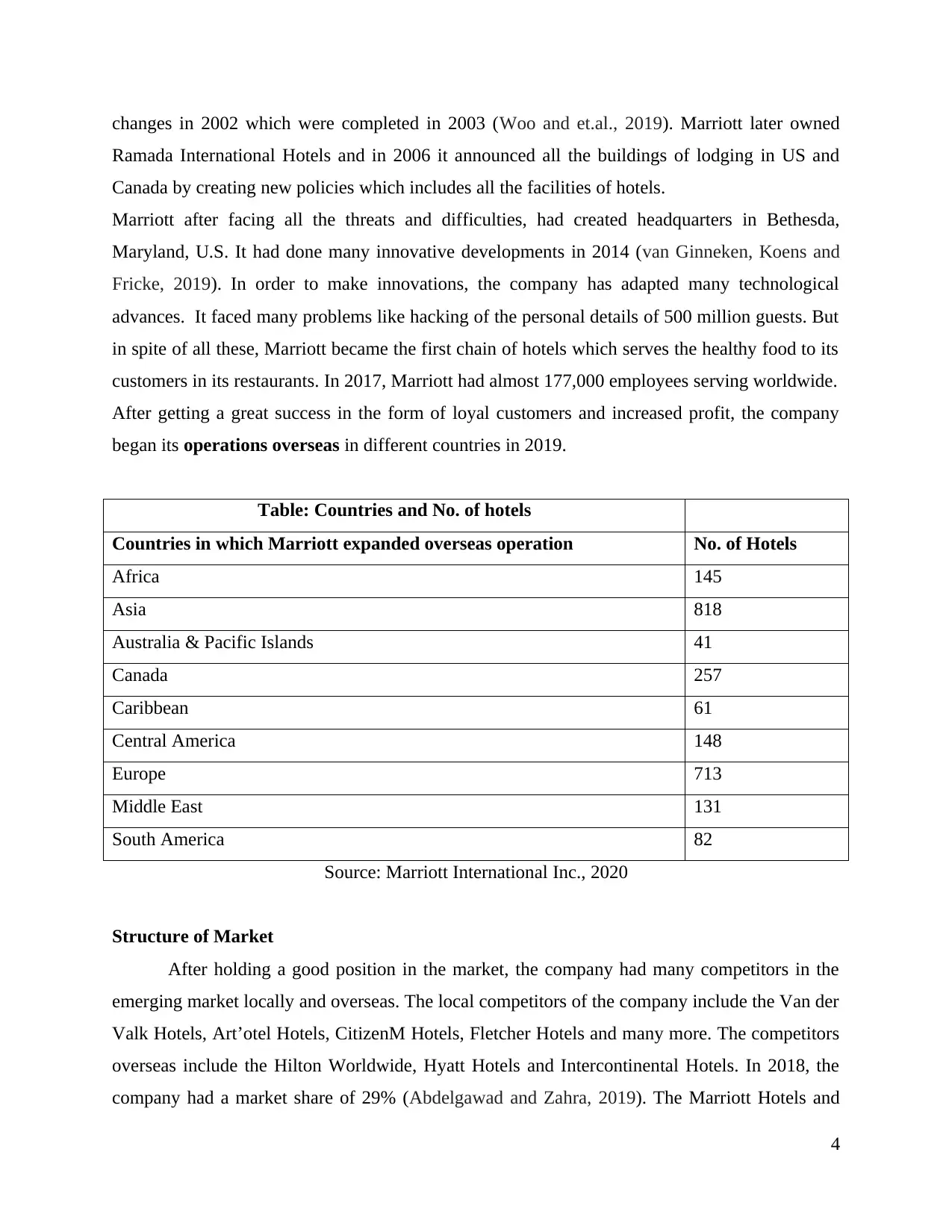
changes in 2002 which were completed in 2003 (Woo and et.al., 2019). Marriott later owned
Ramada International Hotels and in 2006 it announced all the buildings of lodging in US and
Canada by creating new policies which includes all the facilities of hotels.
Marriott after facing all the threats and difficulties, had created headquarters in Bethesda,
Maryland, U.S. It had done many innovative developments in 2014 (van Ginneken, Koens and
Fricke, 2019). In order to make innovations, the company has adapted many technological
advances. It faced many problems like hacking of the personal details of 500 million guests. But
in spite of all these, Marriott became the first chain of hotels which serves the healthy food to its
customers in its restaurants. In 2017, Marriott had almost 177,000 employees serving worldwide.
After getting a great success in the form of loyal customers and increased profit, the company
began its operations overseas in different countries in 2019.
Table: Countries and No. of hotels
Countries in which Marriott expanded overseas operation No. of Hotels
Africa 145
Asia 818
Australia & Pacific Islands 41
Canada 257
Caribbean 61
Central America 148
Europe 713
Middle East 131
South America 82
Source: Marriott International Inc., 2020
Structure of Market
After holding a good position in the market, the company had many competitors in the
emerging market locally and overseas. The local competitors of the company include the Van der
Valk Hotels, Art’otel Hotels, CitizenM Hotels, Fletcher Hotels and many more. The competitors
overseas include the Hilton Worldwide, Hyatt Hotels and Intercontinental Hotels. In 2018, the
company had a market share of 29% (Abdelgawad and Zahra, 2019). The Marriott Hotels and
4
Ramada International Hotels and in 2006 it announced all the buildings of lodging in US and
Canada by creating new policies which includes all the facilities of hotels.
Marriott after facing all the threats and difficulties, had created headquarters in Bethesda,
Maryland, U.S. It had done many innovative developments in 2014 (van Ginneken, Koens and
Fricke, 2019). In order to make innovations, the company has adapted many technological
advances. It faced many problems like hacking of the personal details of 500 million guests. But
in spite of all these, Marriott became the first chain of hotels which serves the healthy food to its
customers in its restaurants. In 2017, Marriott had almost 177,000 employees serving worldwide.
After getting a great success in the form of loyal customers and increased profit, the company
began its operations overseas in different countries in 2019.
Table: Countries and No. of hotels
Countries in which Marriott expanded overseas operation No. of Hotels
Africa 145
Asia 818
Australia & Pacific Islands 41
Canada 257
Caribbean 61
Central America 148
Europe 713
Middle East 131
South America 82
Source: Marriott International Inc., 2020
Structure of Market
After holding a good position in the market, the company had many competitors in the
emerging market locally and overseas. The local competitors of the company include the Van der
Valk Hotels, Art’otel Hotels, CitizenM Hotels, Fletcher Hotels and many more. The competitors
overseas include the Hilton Worldwide, Hyatt Hotels and Intercontinental Hotels. In 2018, the
company had a market share of 29% (Abdelgawad and Zahra, 2019). The Marriott Hotels and
4
Paraphrase This Document
Need a fresh take? Get an instant paraphrase of this document with our AI Paraphraser
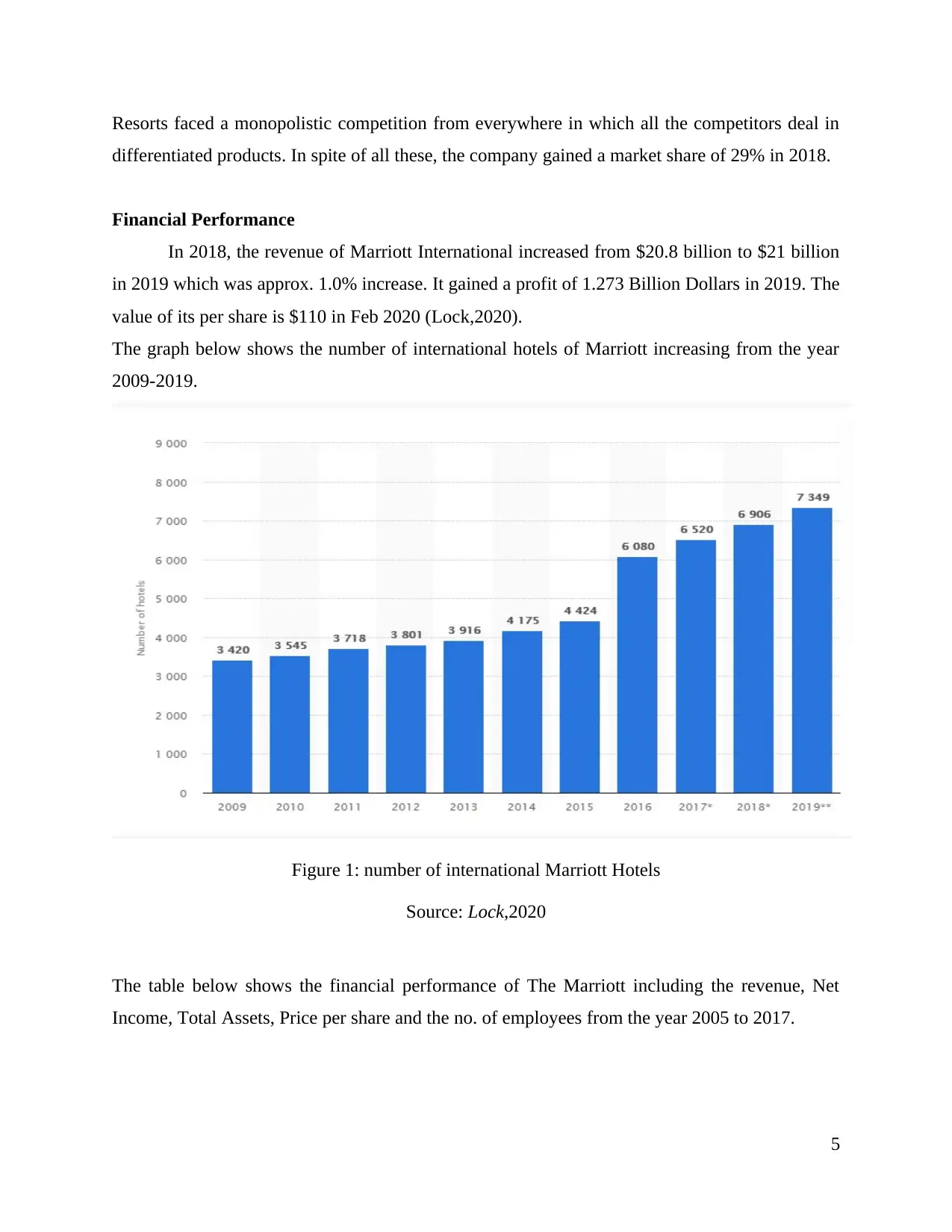
Resorts faced a monopolistic competition from everywhere in which all the competitors deal in
differentiated products. In spite of all these, the company gained a market share of 29% in 2018.
Financial Performance
In 2018, the revenue of Marriott International increased from $20.8 billion to $21 billion
in 2019 which was approx. 1.0% increase. It gained a profit of 1.273 Billion Dollars in 2019. The
value of its per share is $110 in Feb 2020 (Lock,2020).
The graph below shows the number of international hotels of Marriott increasing from the year
2009-2019.
Figure 1: number of international Marriott Hotels
Source: Lock,2020
The table below shows the financial performance of The Marriott including the revenue, Net
Income, Total Assets, Price per share and the no. of employees from the year 2005 to 2017.
5
differentiated products. In spite of all these, the company gained a market share of 29% in 2018.
Financial Performance
In 2018, the revenue of Marriott International increased from $20.8 billion to $21 billion
in 2019 which was approx. 1.0% increase. It gained a profit of 1.273 Billion Dollars in 2019. The
value of its per share is $110 in Feb 2020 (Lock,2020).
The graph below shows the number of international hotels of Marriott increasing from the year
2009-2019.
Figure 1: number of international Marriott Hotels
Source: Lock,2020
The table below shows the financial performance of The Marriott including the revenue, Net
Income, Total Assets, Price per share and the no. of employees from the year 2005 to 2017.
5
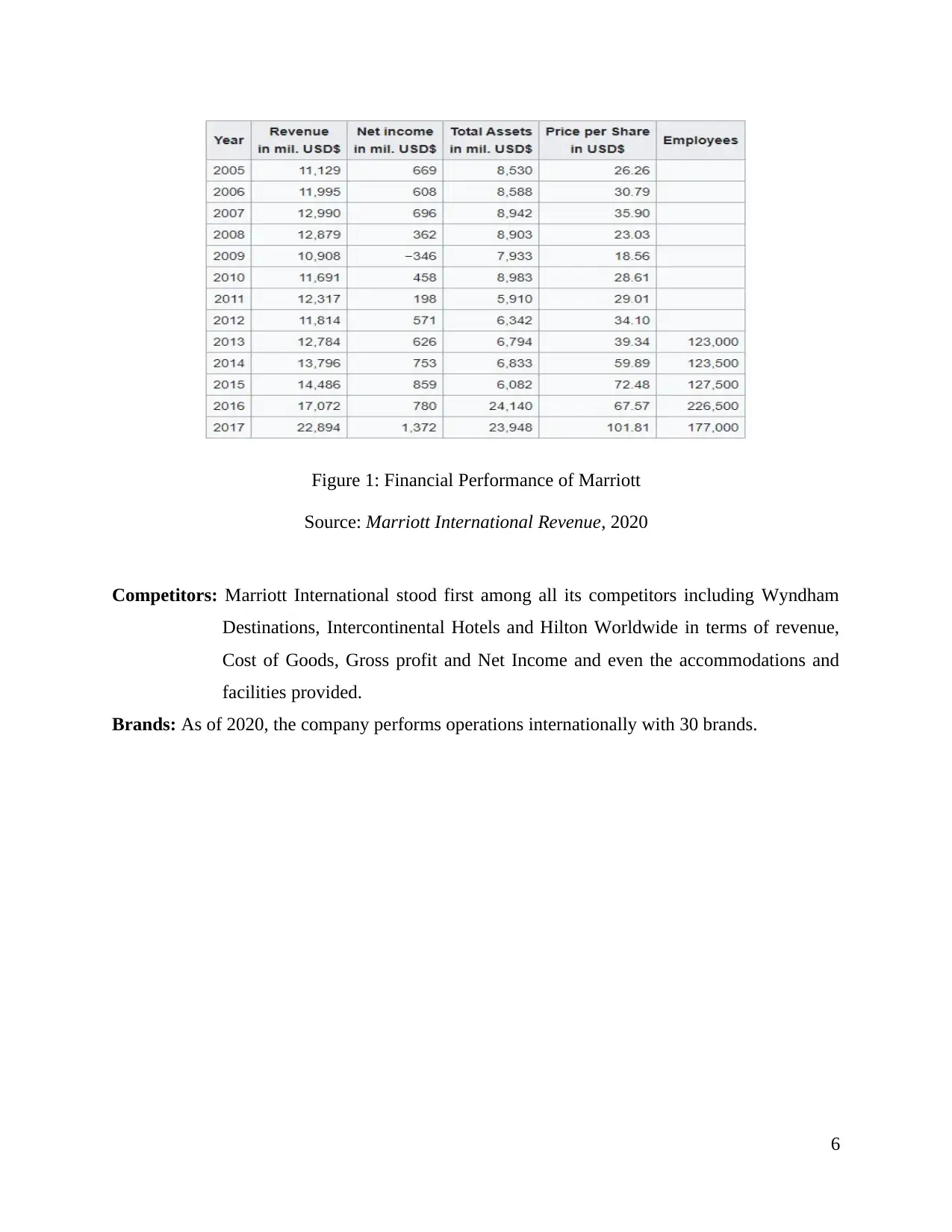
Figure 1: Financial Performance of Marriott
Source: Marriott International Revenue, 2020
Competitors: Marriott International stood first among all its competitors including Wyndham
Destinations, Intercontinental Hotels and Hilton Worldwide in terms of revenue,
Cost of Goods, Gross profit and Net Income and even the accommodations and
facilities provided.
Brands: As of 2020, the company performs operations internationally with 30 brands.
6
Source: Marriott International Revenue, 2020
Competitors: Marriott International stood first among all its competitors including Wyndham
Destinations, Intercontinental Hotels and Hilton Worldwide in terms of revenue,
Cost of Goods, Gross profit and Net Income and even the accommodations and
facilities provided.
Brands: As of 2020, the company performs operations internationally with 30 brands.
6
⊘ This is a preview!⊘
Do you want full access?
Subscribe today to unlock all pages.

Trusted by 1+ million students worldwide
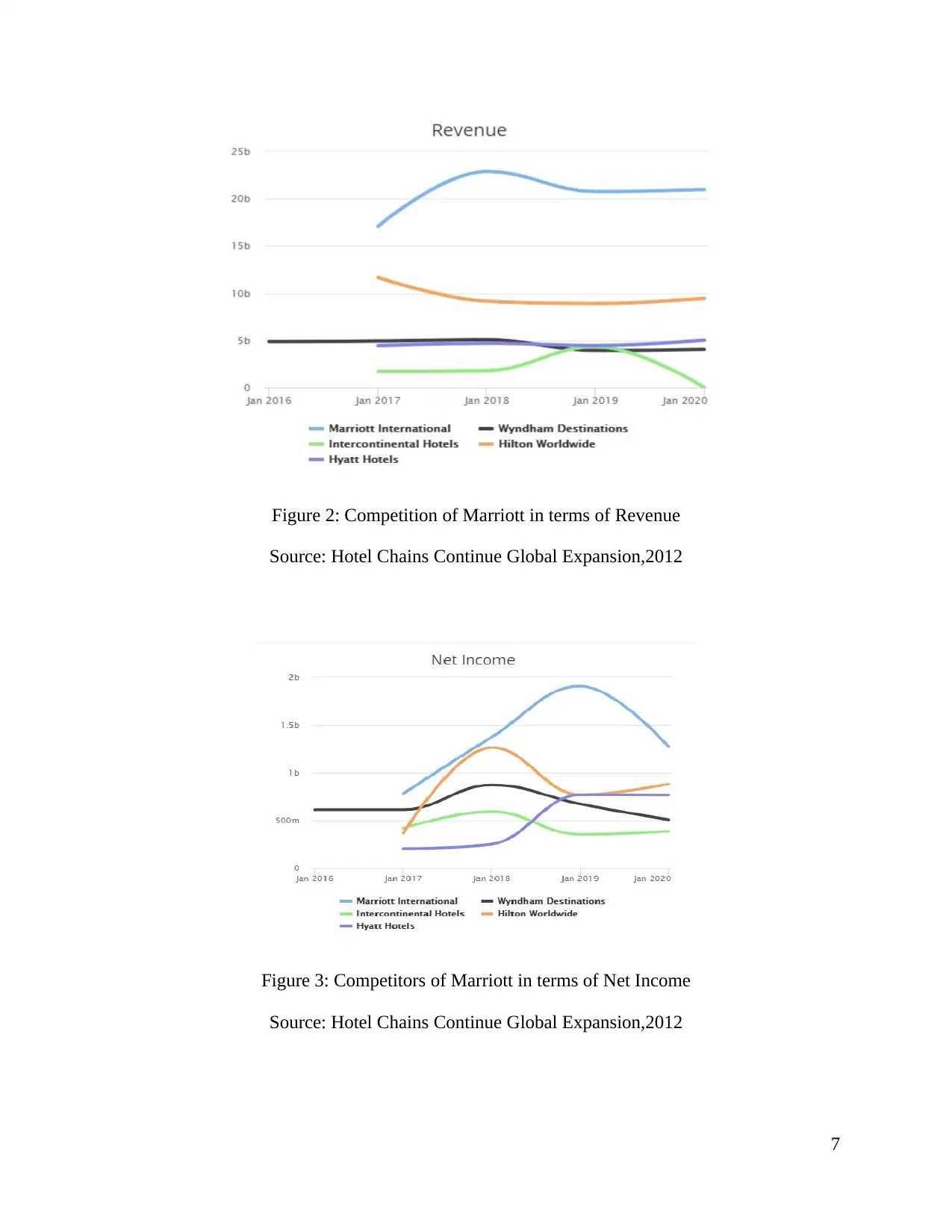
Figure 2: Competition of Marriott in terms of Revenue
Source: Hotel Chains Continue Global Expansion,2012
Figure 3: Competitors of Marriott in terms of Net Income
Source: Hotel Chains Continue Global Expansion,2012
7
Source: Hotel Chains Continue Global Expansion,2012
Figure 3: Competitors of Marriott in terms of Net Income
Source: Hotel Chains Continue Global Expansion,2012
7
Paraphrase This Document
Need a fresh take? Get an instant paraphrase of this document with our AI Paraphraser
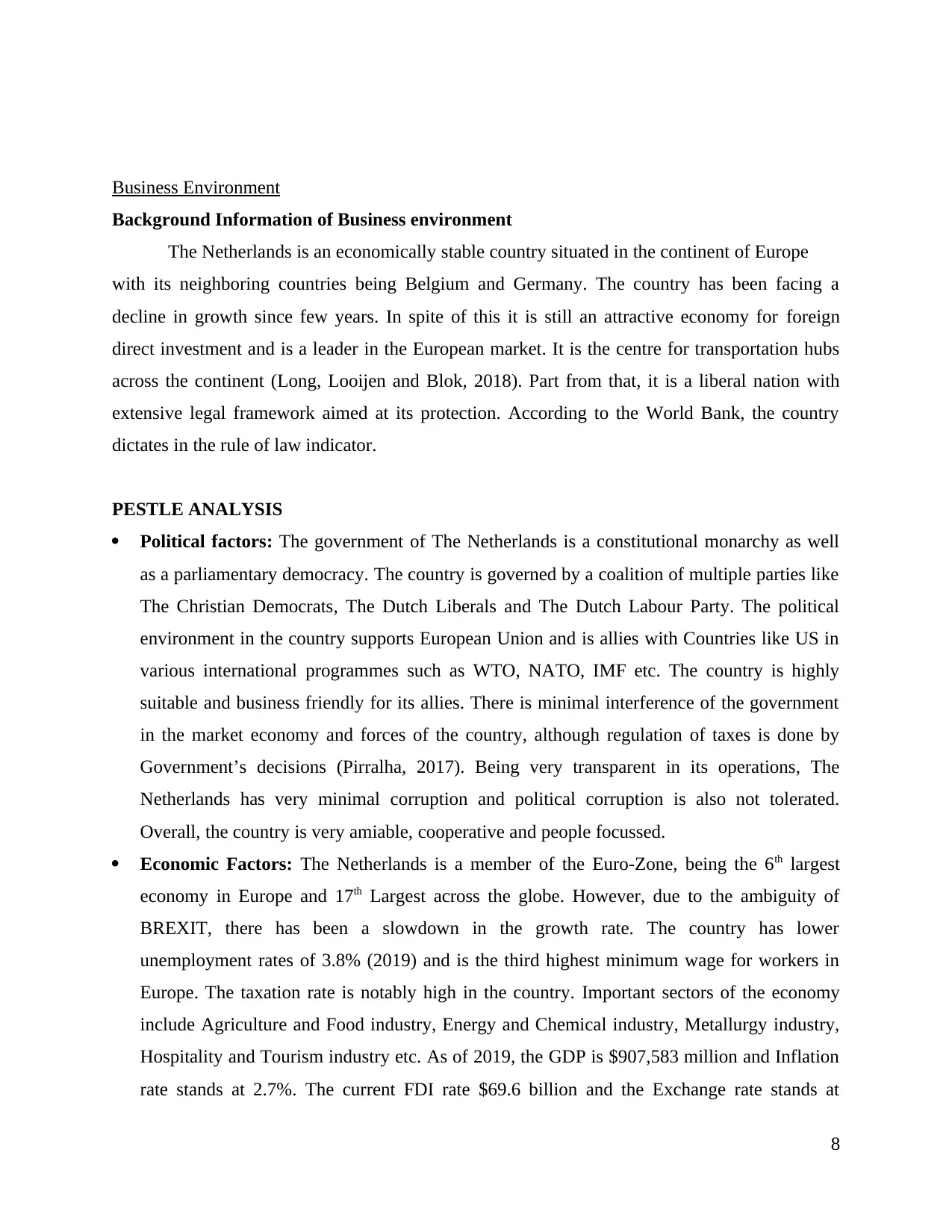
Business Environment
Background Information of Business environment
The Netherlands is an economically stable country situated in the continent of Europe
with its neighboring countries being Belgium and Germany. The country has been facing a
decline in growth since few years. In spite of this it is still an attractive economy for foreign
direct investment and is a leader in the European market. It is the centre for transportation hubs
across the continent (Long, Looijen and Blok, 2018). Part from that, it is a liberal nation with
extensive legal framework aimed at its protection. According to the World Bank, the country
dictates in the rule of law indicator.
PESTLE ANALYSIS
Political factors: The government of The Netherlands is a constitutional monarchy as well
as a parliamentary democracy. The country is governed by a coalition of multiple parties like
The Christian Democrats, The Dutch Liberals and The Dutch Labour Party. The political
environment in the country supports European Union and is allies with Countries like US in
various international programmes such as WTO, NATO, IMF etc. The country is highly
suitable and business friendly for its allies. There is minimal interference of the government
in the market economy and forces of the country, although regulation of taxes is done by
Government’s decisions (Pirralha, 2017). Being very transparent in its operations, The
Netherlands has very minimal corruption and political corruption is also not tolerated.
Overall, the country is very amiable, cooperative and people focussed.
Economic Factors: The Netherlands is a member of the Euro-Zone, being the 6th largest
economy in Europe and 17th Largest across the globe. However, due to the ambiguity of
BREXIT, there has been a slowdown in the growth rate. The country has lower
unemployment rates of 3.8% (2019) and is the third highest minimum wage for workers in
Europe. The taxation rate is notably high in the country. Important sectors of the economy
include Agriculture and Food industry, Energy and Chemical industry, Metallurgy industry,
Hospitality and Tourism industry etc. As of 2019, the GDP is $907,583 million and Inflation
rate stands at 2.7%. The current FDI rate $69.6 billion and the Exchange rate stands at
8
Background Information of Business environment
The Netherlands is an economically stable country situated in the continent of Europe
with its neighboring countries being Belgium and Germany. The country has been facing a
decline in growth since few years. In spite of this it is still an attractive economy for foreign
direct investment and is a leader in the European market. It is the centre for transportation hubs
across the continent (Long, Looijen and Blok, 2018). Part from that, it is a liberal nation with
extensive legal framework aimed at its protection. According to the World Bank, the country
dictates in the rule of law indicator.
PESTLE ANALYSIS
Political factors: The government of The Netherlands is a constitutional monarchy as well
as a parliamentary democracy. The country is governed by a coalition of multiple parties like
The Christian Democrats, The Dutch Liberals and The Dutch Labour Party. The political
environment in the country supports European Union and is allies with Countries like US in
various international programmes such as WTO, NATO, IMF etc. The country is highly
suitable and business friendly for its allies. There is minimal interference of the government
in the market economy and forces of the country, although regulation of taxes is done by
Government’s decisions (Pirralha, 2017). Being very transparent in its operations, The
Netherlands has very minimal corruption and political corruption is also not tolerated.
Overall, the country is very amiable, cooperative and people focussed.
Economic Factors: The Netherlands is a member of the Euro-Zone, being the 6th largest
economy in Europe and 17th Largest across the globe. However, due to the ambiguity of
BREXIT, there has been a slowdown in the growth rate. The country has lower
unemployment rates of 3.8% (2019) and is the third highest minimum wage for workers in
Europe. The taxation rate is notably high in the country. Important sectors of the economy
include Agriculture and Food industry, Energy and Chemical industry, Metallurgy industry,
Hospitality and Tourism industry etc. As of 2019, the GDP is $907,583 million and Inflation
rate stands at 2.7%. The current FDI rate $69.6 billion and the Exchange rate stands at
8
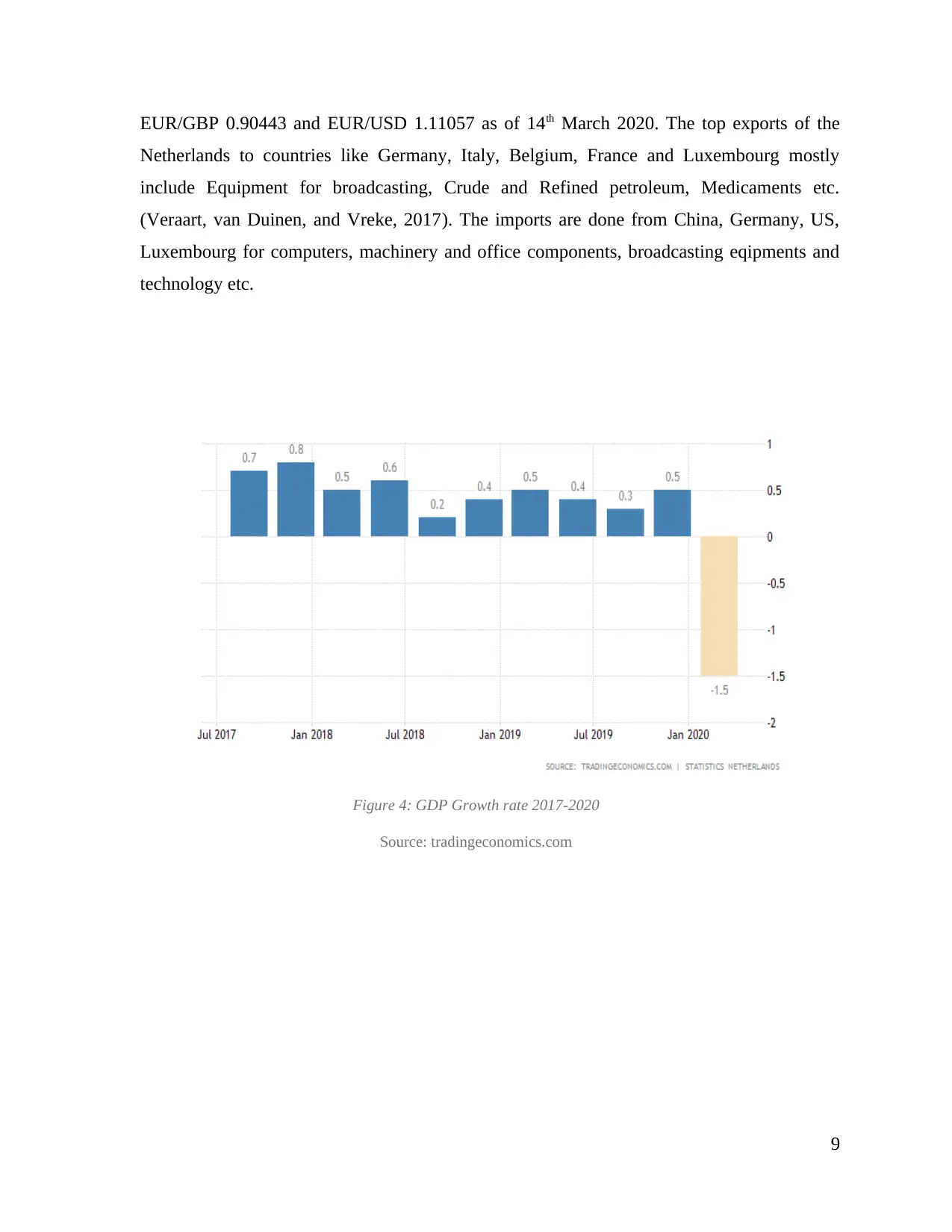
EUR/GBP 0.90443 and EUR/USD 1.11057 as of 14th March 2020. The top exports of the
Netherlands to countries like Germany, Italy, Belgium, France and Luxembourg mostly
include Equipment for broadcasting, Crude and Refined petroleum, Medicaments etc.
(Veraart, van Duinen, and Vreke, 2017). The imports are done from China, Germany, US,
Luxembourg for computers, machinery and office components, broadcasting eqipments and
technology etc.
Figure 4: GDP Growth rate 2017-2020
Source: tradingeconomics.com
9
Netherlands to countries like Germany, Italy, Belgium, France and Luxembourg mostly
include Equipment for broadcasting, Crude and Refined petroleum, Medicaments etc.
(Veraart, van Duinen, and Vreke, 2017). The imports are done from China, Germany, US,
Luxembourg for computers, machinery and office components, broadcasting eqipments and
technology etc.
Figure 4: GDP Growth rate 2017-2020
Source: tradingeconomics.com
9
⊘ This is a preview!⊘
Do you want full access?
Subscribe today to unlock all pages.

Trusted by 1+ million students worldwide
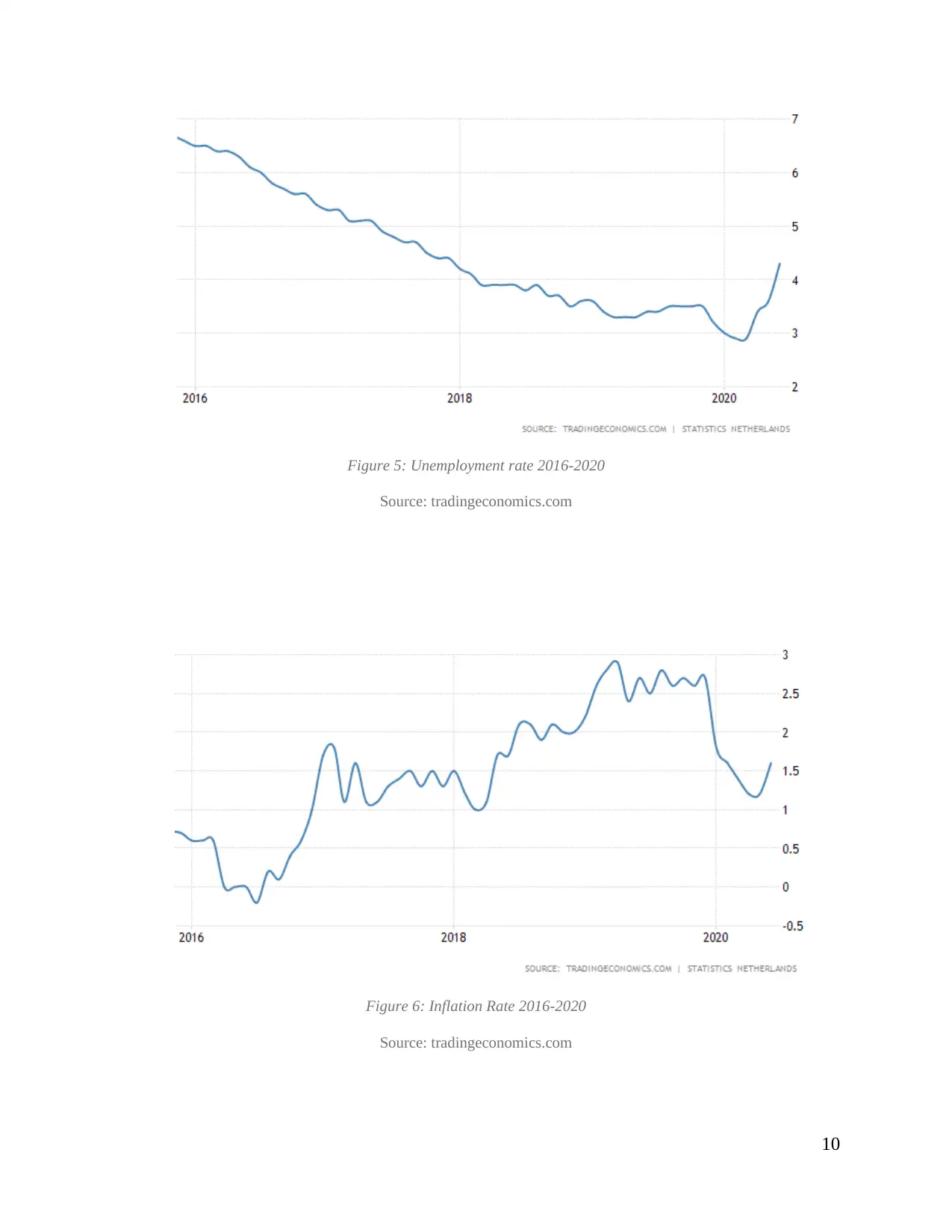
Figure 5: Unemployment rate 2016-2020
Source: tradingeconomics.com
Figure 6: Inflation Rate 2016-2020
Source: tradingeconomics.com
10
Source: tradingeconomics.com
Figure 6: Inflation Rate 2016-2020
Source: tradingeconomics.com
10
Paraphrase This Document
Need a fresh take? Get an instant paraphrase of this document with our AI Paraphraser
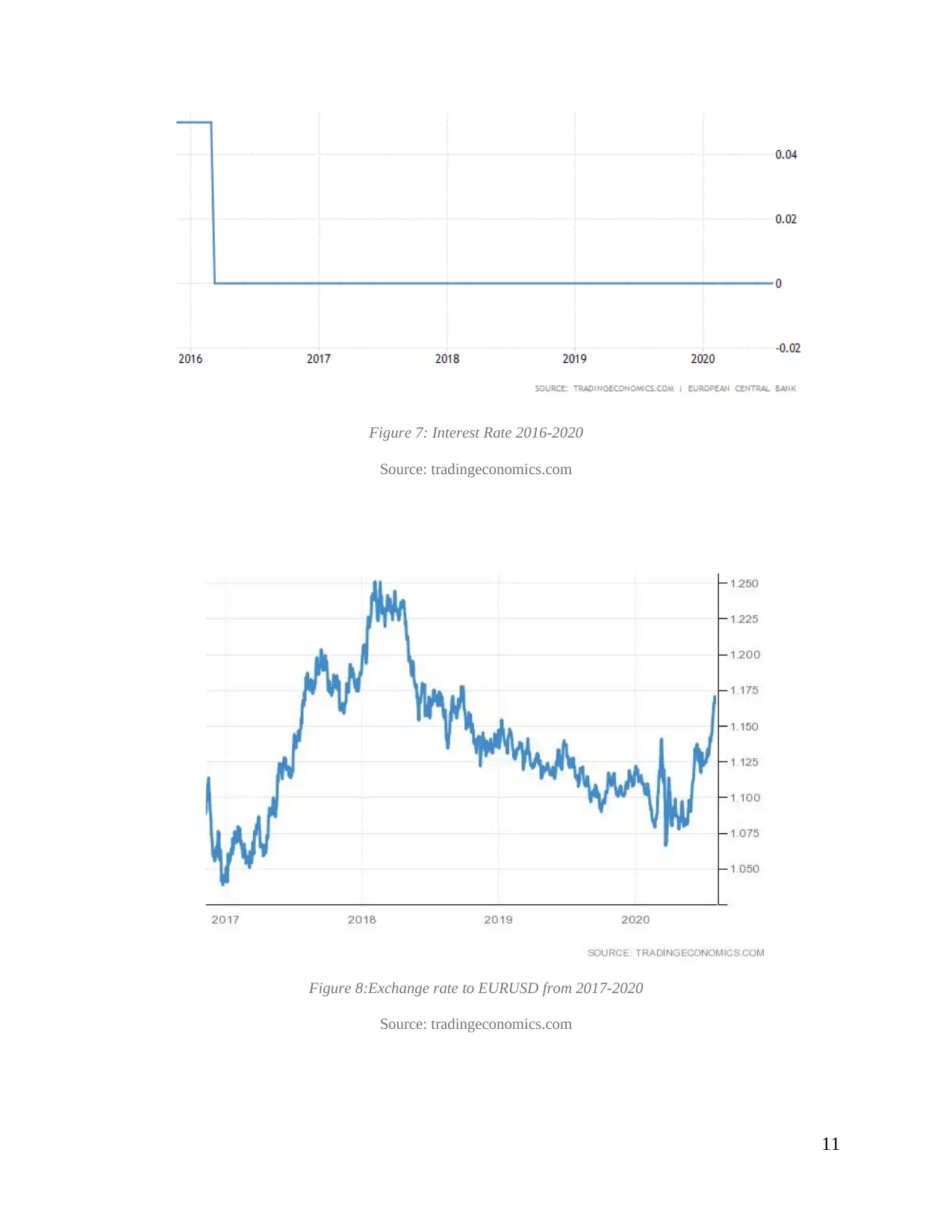
Figure 7: Interest Rate 2016-2020
Source: tradingeconomics.com
Figure 8:Exchange rate to EURUSD from 2017-2020
Source: tradingeconomics.com
11
Source: tradingeconomics.com
Figure 8:Exchange rate to EURUSD from 2017-2020
Source: tradingeconomics.com
11
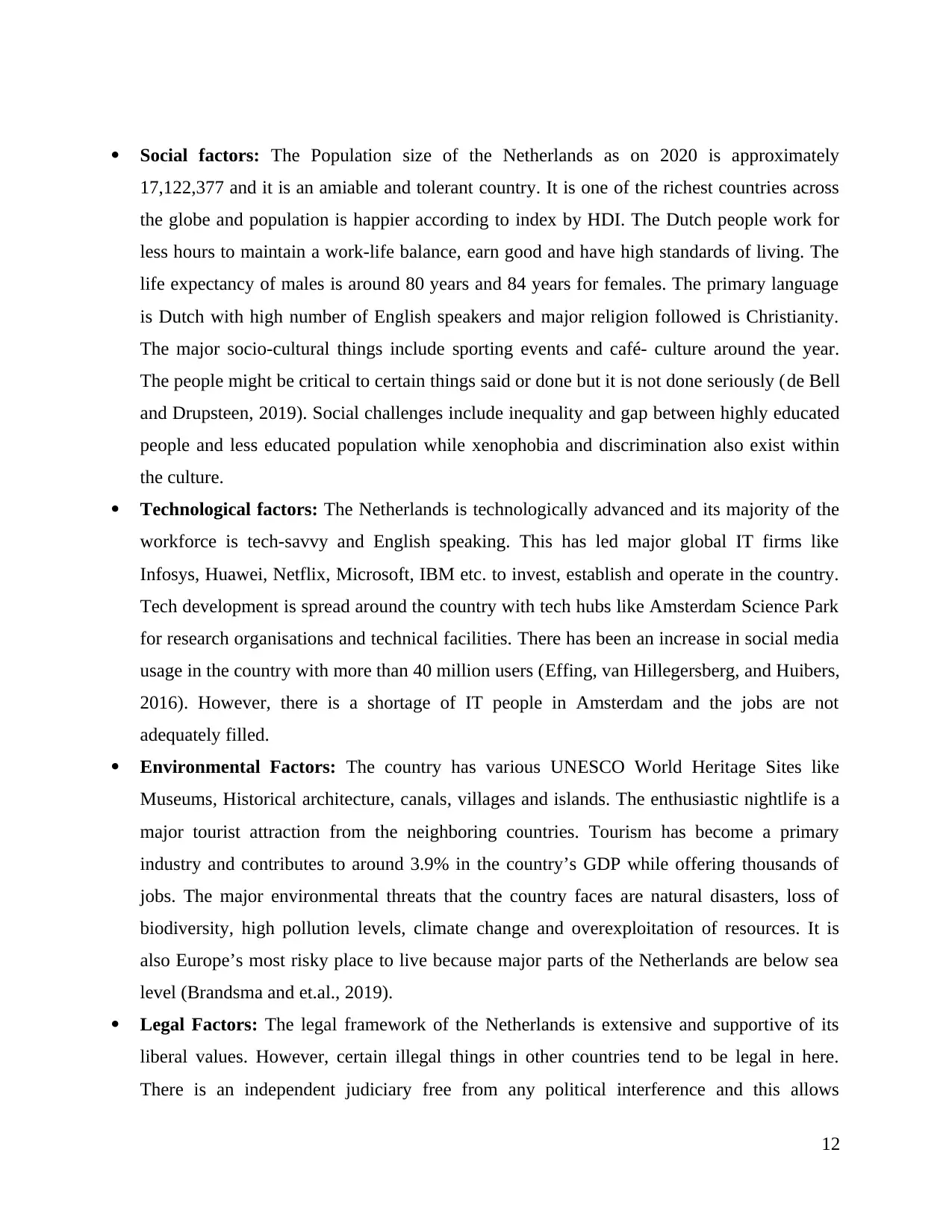
Social factors: The Population size of the Netherlands as on 2020 is approximately
17,122,377 and it is an amiable and tolerant country. It is one of the richest countries across
the globe and population is happier according to index by HDI. The Dutch people work for
less hours to maintain a work-life balance, earn good and have high standards of living. The
life expectancy of males is around 80 years and 84 years for females. The primary language
is Dutch with high number of English speakers and major religion followed is Christianity.
The major socio-cultural things include sporting events and café- culture around the year.
The people might be critical to certain things said or done but it is not done seriously (de Bell
and Drupsteen, 2019). Social challenges include inequality and gap between highly educated
people and less educated population while xenophobia and discrimination also exist within
the culture.
Technological factors: The Netherlands is technologically advanced and its majority of the
workforce is tech-savvy and English speaking. This has led major global IT firms like
Infosys, Huawei, Netflix, Microsoft, IBM etc. to invest, establish and operate in the country.
Tech development is spread around the country with tech hubs like Amsterdam Science Park
for research organisations and technical facilities. There has been an increase in social media
usage in the country with more than 40 million users (Effing, van Hillegersberg, and Huibers,
2016). However, there is a shortage of IT people in Amsterdam and the jobs are not
adequately filled.
Environmental Factors: The country has various UNESCO World Heritage Sites like
Museums, Historical architecture, canals, villages and islands. The enthusiastic nightlife is a
major tourist attraction from the neighboring countries. Tourism has become a primary
industry and contributes to around 3.9% in the country’s GDP while offering thousands of
jobs. The major environmental threats that the country faces are natural disasters, loss of
biodiversity, high pollution levels, climate change and overexploitation of resources. It is
also Europe’s most risky place to live because major parts of the Netherlands are below sea
level (Brandsma and et.al., 2019).
Legal Factors: The legal framework of the Netherlands is extensive and supportive of its
liberal values. However, certain illegal things in other countries tend to be legal in here.
There is an independent judiciary free from any political interference and this allows
12
17,122,377 and it is an amiable and tolerant country. It is one of the richest countries across
the globe and population is happier according to index by HDI. The Dutch people work for
less hours to maintain a work-life balance, earn good and have high standards of living. The
life expectancy of males is around 80 years and 84 years for females. The primary language
is Dutch with high number of English speakers and major religion followed is Christianity.
The major socio-cultural things include sporting events and café- culture around the year.
The people might be critical to certain things said or done but it is not done seriously (de Bell
and Drupsteen, 2019). Social challenges include inequality and gap between highly educated
people and less educated population while xenophobia and discrimination also exist within
the culture.
Technological factors: The Netherlands is technologically advanced and its majority of the
workforce is tech-savvy and English speaking. This has led major global IT firms like
Infosys, Huawei, Netflix, Microsoft, IBM etc. to invest, establish and operate in the country.
Tech development is spread around the country with tech hubs like Amsterdam Science Park
for research organisations and technical facilities. There has been an increase in social media
usage in the country with more than 40 million users (Effing, van Hillegersberg, and Huibers,
2016). However, there is a shortage of IT people in Amsterdam and the jobs are not
adequately filled.
Environmental Factors: The country has various UNESCO World Heritage Sites like
Museums, Historical architecture, canals, villages and islands. The enthusiastic nightlife is a
major tourist attraction from the neighboring countries. Tourism has become a primary
industry and contributes to around 3.9% in the country’s GDP while offering thousands of
jobs. The major environmental threats that the country faces are natural disasters, loss of
biodiversity, high pollution levels, climate change and overexploitation of resources. It is
also Europe’s most risky place to live because major parts of the Netherlands are below sea
level (Brandsma and et.al., 2019).
Legal Factors: The legal framework of the Netherlands is extensive and supportive of its
liberal values. However, certain illegal things in other countries tend to be legal in here.
There is an independent judiciary free from any political interference and this allows
12
⊘ This is a preview!⊘
Do you want full access?
Subscribe today to unlock all pages.

Trusted by 1+ million students worldwide
1 out of 17
Related Documents
Your All-in-One AI-Powered Toolkit for Academic Success.
+13062052269
info@desklib.com
Available 24*7 on WhatsApp / Email
![[object Object]](/_next/static/media/star-bottom.7253800d.svg)
Unlock your academic potential
Copyright © 2020–2025 A2Z Services. All Rights Reserved. Developed and managed by ZUCOL.





